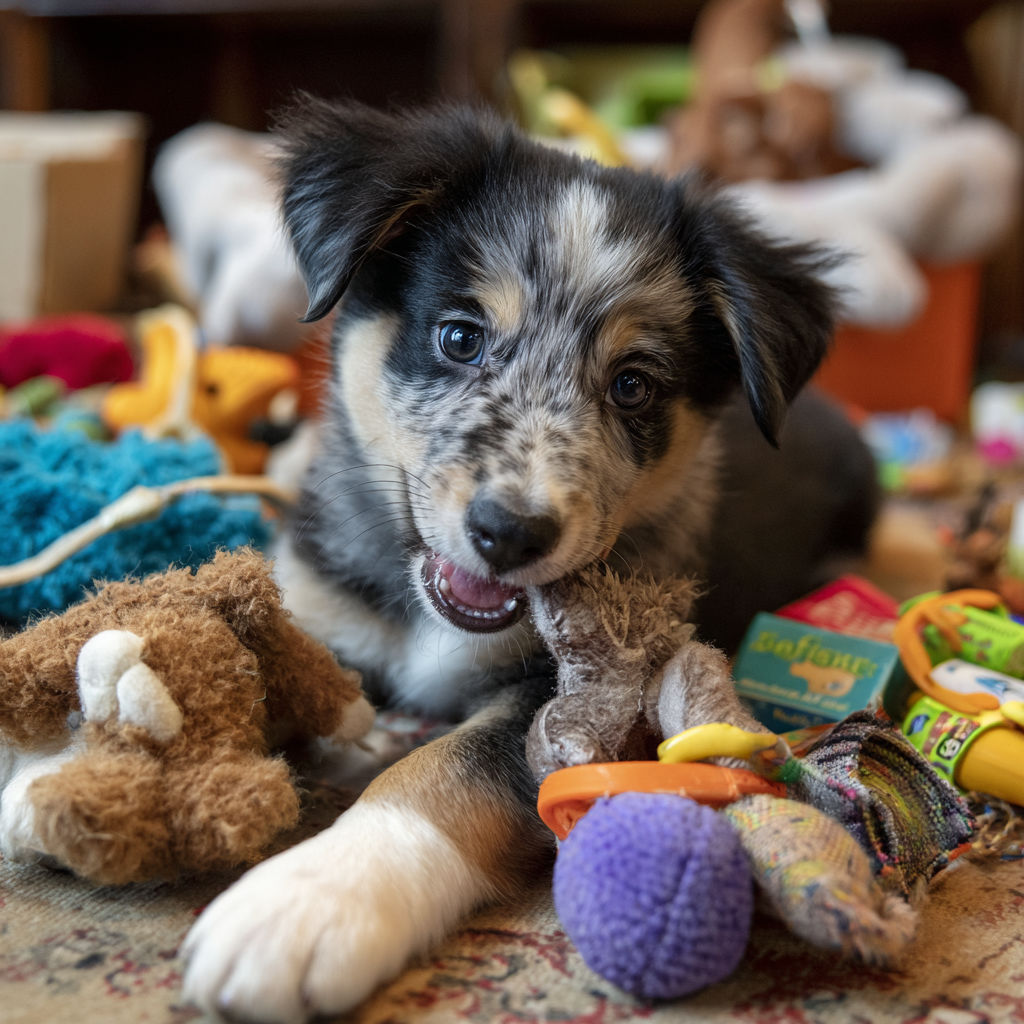Effective Puppy Nipping Training and Top Toys to Redirect Behavior
Is your adorable puppy turning into a tiny mouthy tornado? Did you know that around 80% of puppies nip and mouth humans by 16 weeks of age? Nipping peaks between 12 and 18 weeks, often driven by teething, play, or seeking attention. Don’t worry, with the right techniques and toys, you can effectively train your puppy not to nip. I’ll share practical tips on puppy nipping training, recommend the best toys for nipping puppies, and explain how to keep your pup engaged during teething. Understanding why puppies nip is crucial to managing this behavior successfully and building a strong, positive bond. Let’s dive into how to stop puppy nipping and keep their adorable mouthing under control.
Understanding Why Puppies Nip
Puppies nip for various reasons like exploring their world, teething discomfort, or getting your attention. Since 70% of puppies outgrow nipping by 6 months, consistent training and socialization are key. It’s normal behavior but can become problematic if not addressed early. Nipping typically peaks between 12-18 weeks, making this the perfect window to intervene. Training a puppy not to nip requires patience and positive reinforcement, focusing on redirecting their mouthy energy toward appropriate outlets. Effective puppy biting training involves understanding their triggers and consistently teaching them gentle play.
Crucial Strategies for Puppy Nipping Prevention
To effectively stop puppy nipping, I recommend starting with clear boundaries and consistent response routines. When your puppy nips, immediately redirect their attention to a suitable toy. This helps teach them that biting hands isn’t acceptable but chewing toys is. Remember, 50% of nipping behaviors diminish with consistent training and socialization. Use commands like “gentle” or “leave it” and reward calm, nipped-free behaviors. Avoid rough play that encourages biting and always supervise interactions. Keep sessions short and positive, and reinforce good behavior with treats or praise. Over time, your puppy will learn that gentle play earns rewards while nipping does not.
The Best Toys for Nipping Puppies: Redirect and Soothe
Choosing the right puppy nipping toys is essential to redirect their biting instincts productively. Rubber toys are durable and can withstand 74% of bite force, making them excellent for vigorous chewers. Plush toys with squeakers are engaging at 63%, perfect for interactive play. For teething relief, frozen teething toys are incredibly soothing, with 92% effectiveness at numbing sore gums. Interactive puzzle toys are 85% effective in keeping your puppy occupied and mentally stimulated. Nylabone teething toys are also highly durable, with an 80% rating, providing long-lasting options. Using a variety of these toys prevents boredom, reduces nipping, and keeps your puppy happy and engaged. Always supervise toy playtime, especially with tougher toys designed for aggressive chewers.
 Using the right toys along with proper training accelerates the process of transforming nipping puppy behavior into gentle, well-mannered play.
Using the right toys along with proper training accelerates the process of transforming nipping puppy behavior into gentle, well-mannered play.
Top Breeds Prone to Nipping and How to Handle Them
Some breeds are more prone to nipping due to their natural energetic and playful temperaments. Beagles have a 45% tendency to nip, followed by Boxers at 42%, and Bulldogs at 38%. For these breeds, early training and appropriate toys are especially critical. Incorporate interactive toys and provide plenty of exercise to reduce pent-up energy that might lead to nipping. Positive reinforcement combined with structured play sessions helps modify nipping puppy behavior effectively. Remember, patience is vital, and consistency with your training approach will yield the best results.
Practical Tips to Discourage Nipping
- Always redirect nips to appropriate toys
- Use positive reinforcement to reward gentle play
- Keep play sessions calm and controlled
- Introduce Teething Toys early to soothe gums
- Avoid rough play that encourages nips
By integrating these tips into your daily routine, you’ll see a noticeable reduction in puppy biting and nipping. Additionally, combining training with [puppy teething toys](https://example.com/puppy-teething-toys) and durable chew toys for puppies provides a balanced approach to managing mouthing behaviors.
Conclusion and Final Advice
Training a puppy not to nip requires patience, consistency, and the right tools. Use a combination of positive reinforcement, socialization, and engaging toys to guide your puppy towards gentle play. Remember, most puppies outgrow nipping with the right approach, but early intervention is key. Invest in the best toys for nipping puppies and give your pup plenty of opportunities to chew safely. Keep training sessions positive, stay consistent, and soon your little buddy will be a well-behaved companion that loves toys and respectful play. 🐶✨ Don’t forget to share your own tips or ask questions in the comments—I’d love to hear your experiences!
FAQs
How do I train a puppy not to nip? Use redirection to toys, reward gentle behavior, and avoid rough play. Consistency and patience are essential for successful puppy nipping training.
What are the best toys for nipping puppies? Rubber toys, plush squeaker toys, interactive puzzle toys, frozen teething toys, and Nylabone teething toys are among the best options to redirect nipping behavior.
How can I stop my puppy from nipping and biting? Proper training involves immediate redirection, positive reinforcement, and providing suitable chew toys. Socialization also plays a key role in reducing nipping.
What are some effective puppy teething toys? Frozen teething toys, rubber toys, and durable chew toys are highly effective for soothing a teething puppy.
What should I do if my puppy keeps nipping despite training? Increase the frequency of training sessions, add more engaging toys, and ensure consistent responses. Consult a professional if behavior persists.